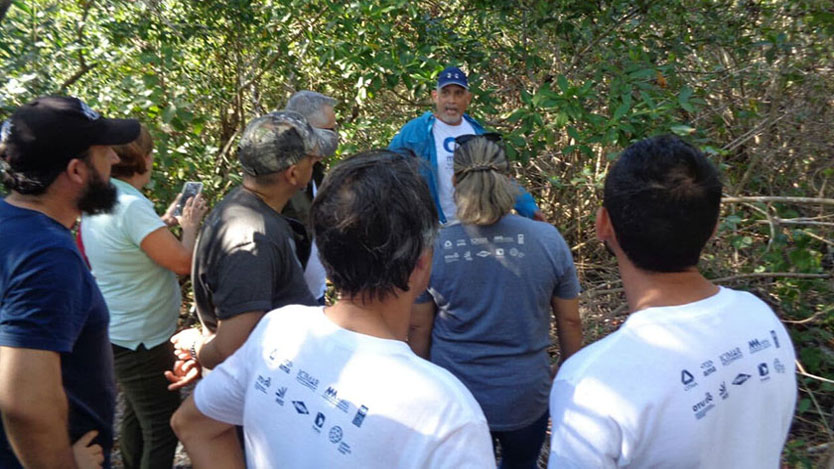
The organizational capacity and willingness of the local authorities, communities and organizations involved in the international Mi Costa project to advance in the fight against climate change (CC) was recognized by the highest representatives in Cuba of this global initiative.
After concluding, in the province of Ciego de Ávila, a tour of the seven direct intervention sites —grouped in two sections of the southern coast of the Island—, Orestes Perdomo Santana, operational coordinator of the United Nations Development Program (UNDP), highlighted the potential, commitment and identification with the objectives of Mi Costa.
He valued these circumstances as favorable to implement a project that materializes the Cuban State Plan to confront the CC (Life Task) by improving the conditions in ecosystems and communities, with the participation of the representations of the National Institute of Hydraulic Resources and the ministries of Agriculture and Science, Technology and Environment.
Referring to the province of Ciego de Ávila, with direct incidence in the town of Júcaro, he recognized the unity between the actors involved and the determination of the professionals who will satisfy cognitive needs in decision-making elements and the community to strengthen adaptation to CC and the disaster risk reduction.
Perdomo Santana emphasized the conditions of the capacity building centers in the municipalities of Baraguá and Venezuela, and the improvements in the completion of the annexed classroom in the territory of Júcaro; in addition to the adequate identification of the areas to be rehabilitated in the southern wetland of Ciego de Ávila, through the restoration of hydrological processes and mangrove forests.
José Manuel Guzmán Menéndez, director of Mi Costa project, financed by the Green Climate Fund and the government in the Greater Antilles, stressed that these training centers will benefit from bibliographical, technological and other resources that will favor the teaching-learning process.
He expressed his satisfaction for the links with the workers of the Protected Area: Jardines de la Reina National Park, in such a way that it constitutes a strength for the respect and interrelation of people with the wetland and their ways of life.
During the exchanges with the local governments, organizations involved and inhabitants of the direct intervention sites, Guzmán Menéndez corroborated the identification with the project and the expectations with its results for the improvement of the quality of life in coastal settlements located in Pinar del Río, Artemisa, Mayabeque, Ciego de Ávila, Camagüey, Las Tunas and Granma.
The visit of the National Management Unit of Mi Costa project to Ciego de Ávila included dialogues with representatives of the Provincial Government, the leadership of the Municipal Assembly of People's Power in Venezuela and the community of Júcaro, as well as tours of the areas where projects are being carried out rehabilitation actions.
With eight years of investment and 22 of maintenance, Mi Costa conceives actions aimed at improving the quality of water, the health and well-being of the communities.
Around 1.3 million people, residents of 7 riverside settlements and 24 municipalities, will benefit from this program, which plans to increase resilience to the effects of climate change in coastal communities and ecosystems, by implementing ecosystem-based adaptation (ABE).
Other purposes are the creation of capacities in the inhabitants of the communities to adjust to the prevailing environmental conditions on the planet and the integration of EBA into national and local planning for coastal management.
In this case, the EBA consists of the recovery and strengthening of the coastal wetland services (mangroves and swamp forests, fundamentally) that will allow the dissipation of the energy of extreme waves and strong winds.
This principle will contribute to restoring the functionality of said environments, which provide protection services against natural disasters, while the training of the factors that interact in the area and the tightening of control measures will ensure the sustainability and continuity of the process.
It will make it possible to improve the availability and quality of water, reducing the risks associated with this resource (droughts, floods and salinization of the vital liquid and soils), he added.
The impacts of the rehabilitation actions will be identified through comprehensive monitoring of the quality of drinking and ocean waters, and the surrounding marine and coastal ecosystems (seagrasses and reefs).
The fundamental pillars of the project are defined as the recovery and conservation of the habitats that protect the coast, the preparation of local governments and inhabitants of the communities, and the strengthening of the regulatory system.
